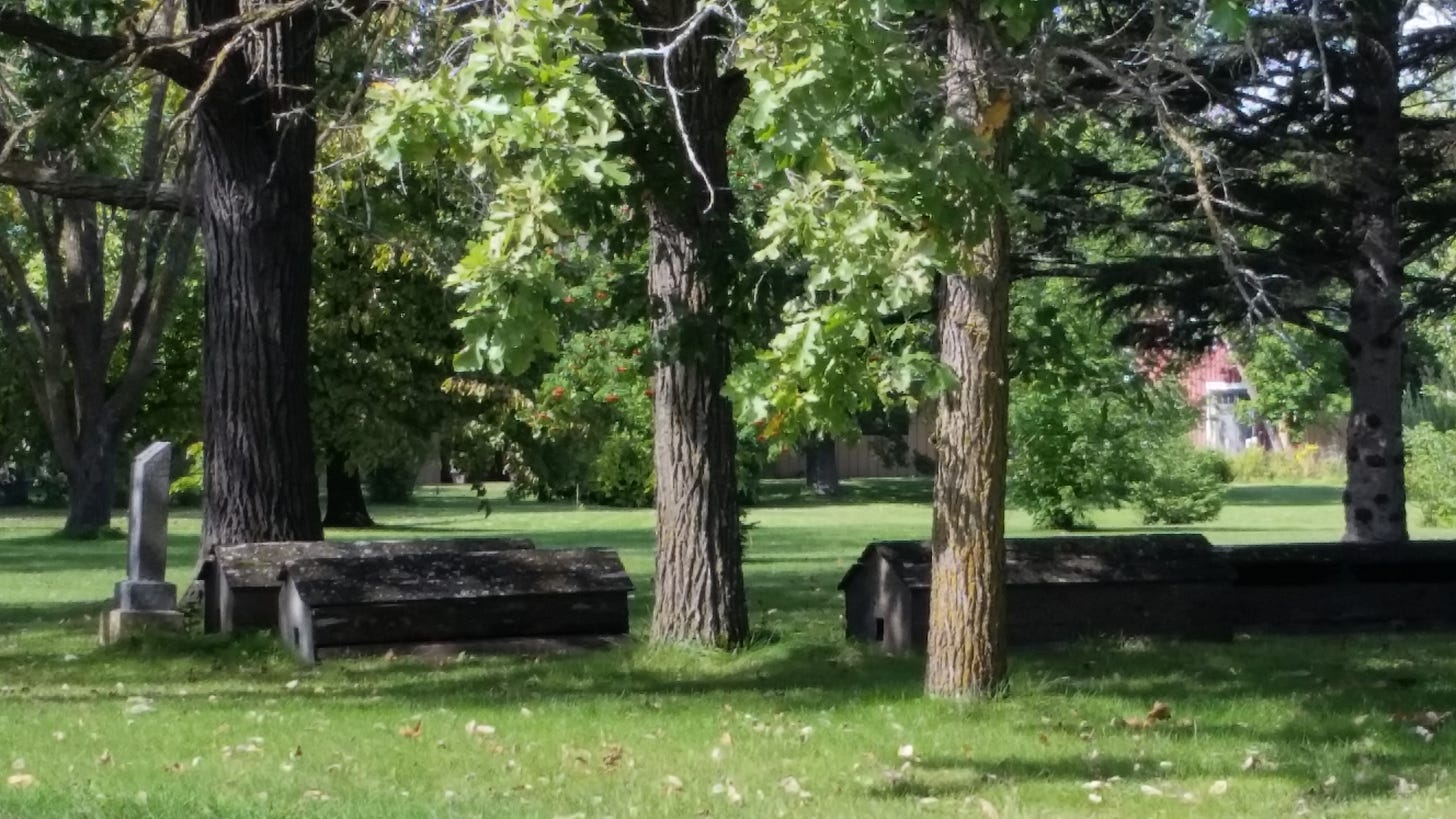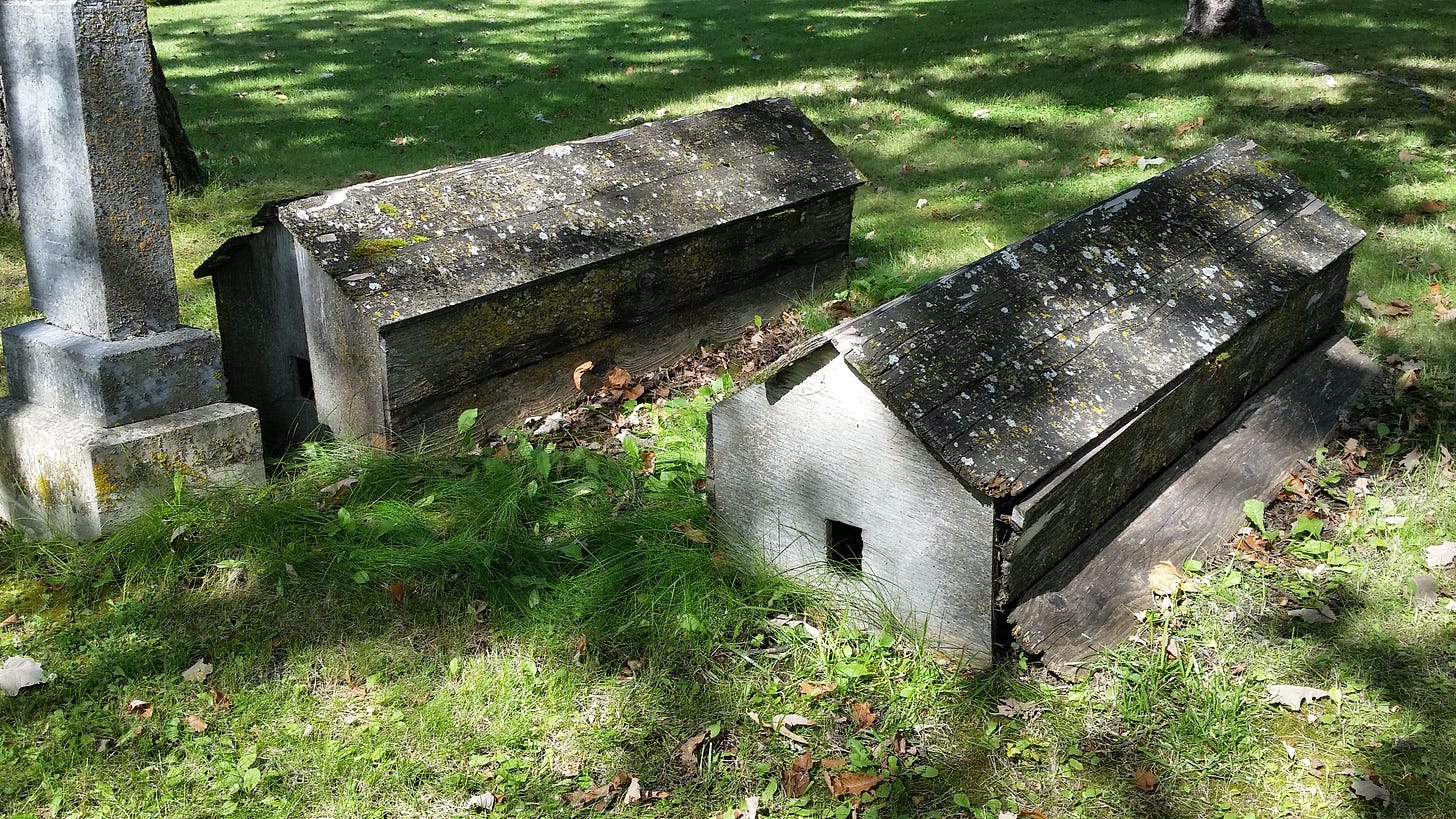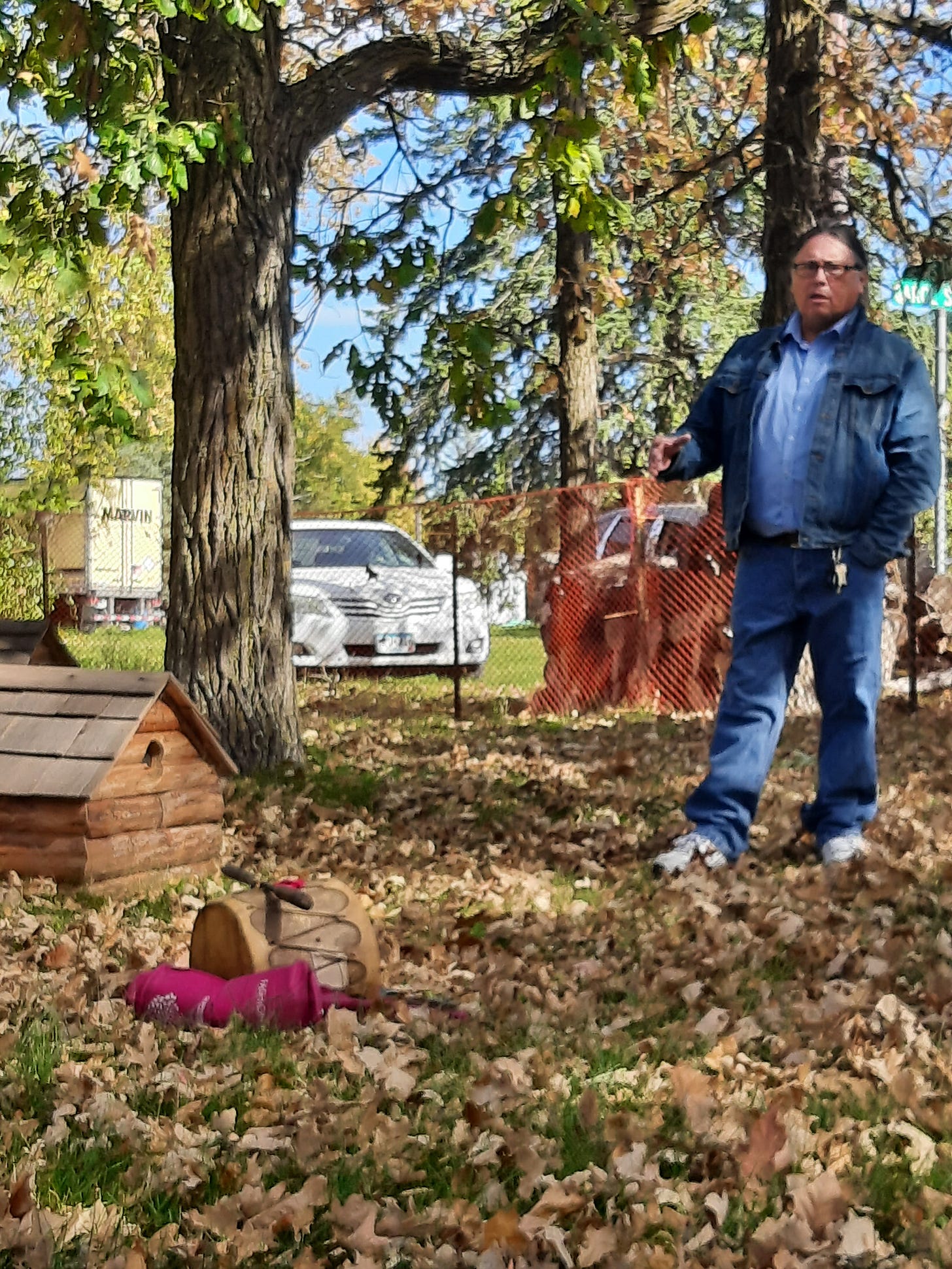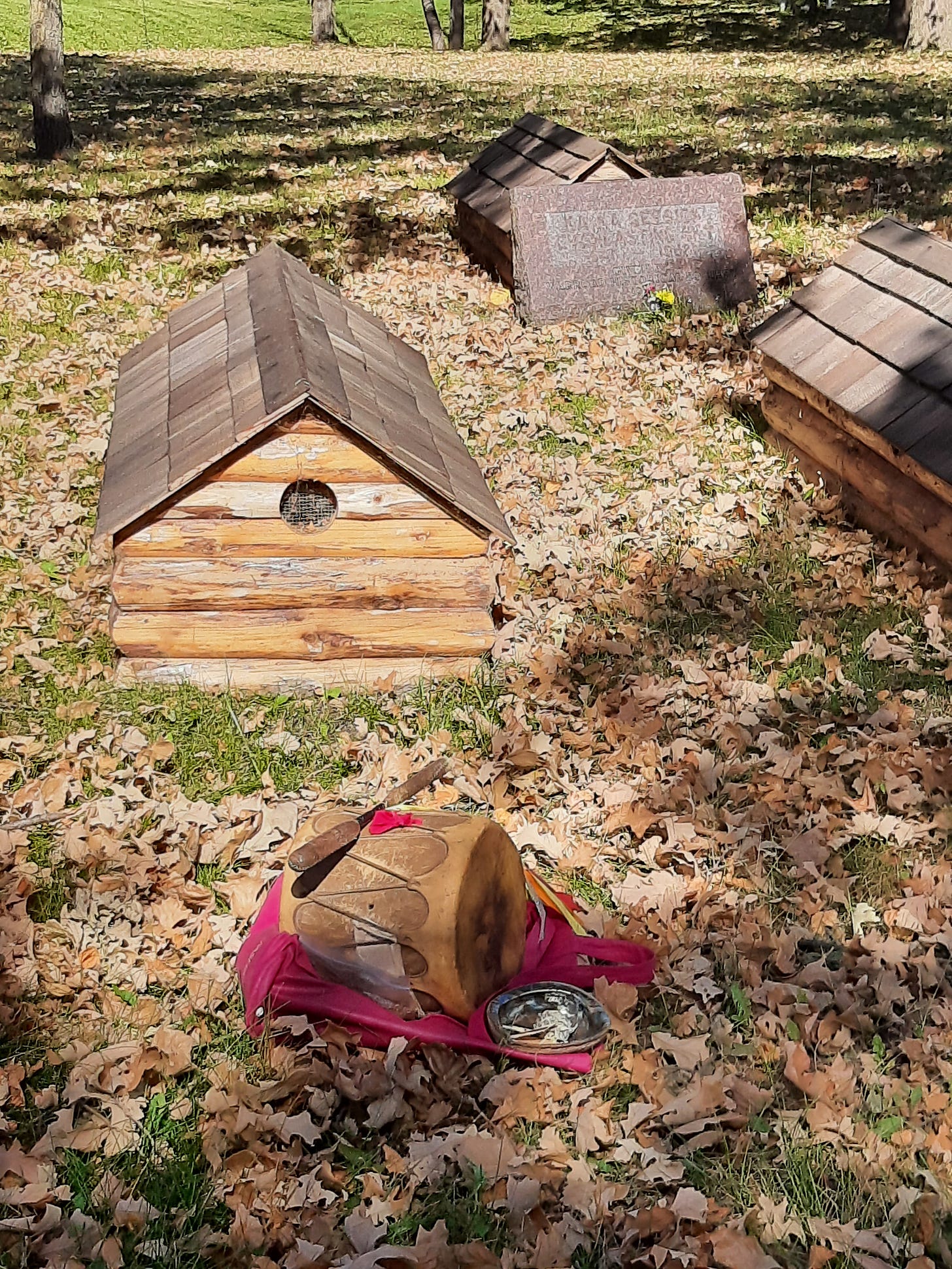A Return to the Unseen
Spirit Houses on Sacred Burial Grounds
Looking at a street map of the city of Warroad, it isn’t easy to identify the place where Kakaygeesick is buried. It isn’t easy to see from the street either.
The little cemetery has no sign or historical marker to signify the sanctity of this place.
In a quiet mixed-income neighborhood of single-family homes, there is a long driveway off Lake Street. It leads to a cluster of three river-front houses with a cemetery in the lawn.
The rushing river, the breeze rustling leaves in the trees, the caws of crows and chirping of chickadees fill the silence. The oak trees throw a blanket of shade over the burial ground.
A stand of old oak and pine trees guards the privacy of the graveyard. Kakaygeesick, his brothers Naymaypoke and Animikeese, and Animikeese’s daughter, Minogeshigoke (Laughing Mary) are buried here. Since Kakaygeesick’s funeral in December of 1968, there haven’t been any new interments.
On the county real estate tax map, this tiny speck is designated as a cemetery, undisturbed and landlocked by private residential property. It is on land originally in Naymaypoke’s 1905 land allotment. It’s a five minute stroll from where the schoolhouse was built in 1907.
Spirit houses like those shown in the photograph can be found in Ojibway cemeteries across the upper peninsula of Michigan, northern Wisconsin, and Minnesota. About two foot tall, the wooden structures have slanted roofs and a small hole at one end where offerings may be left.
Fifty years after Kakaygeesick’s death, all four spirit houses were crumbling from rot. The spirit houses mark the ground as sacred. The Kakakygeesick family wanted to make sure future generations would recognize and respect these sacred grounds and sought to keep alive the tradition and memories of their relatives.
Karen Kakaygeesick and her husband Dan Dethmers served on the American Indian Parent Advisory Committee and met with Mr. Norwegian, American Indian Education program coordinator, who involved Mr. Edman, shop instructor, at Warroad High School. They collaborated on a project in 2019 to recognize the contributions of their family to local history, to preserve and protect the cemetery, and to carry forward the cultural tradition of the spirit houses.
Students at Warroad High School built five new spirit houses and learned about the cultural practices of the Kah-bay-kah-nong and protocol of leaving tobacco as an offering and saying a prayer. The fifth spirit house symbolically represents the unmarked graves of their relations.
At the installation of the new spirit houses in 2019, the Kakaygeesick family, students and school officials joined together in ceremony. Don Kakaygeesick explained the purification ritual of burning sage in smudging at the start. Robert Kakaygeesick spoke about their family history and personal memories. Dan sang and played the drum.
From my limited understanding of Ojibway theology, all things are inhabited by spirit and so everything is spiritual. Ancestors are always with us. Death is merely the end of the material realm. Spiritual power permeates all nature and in death there is a return to this unseen realm.






What a meaningful piece you've written here. "Ancestors are always with us. Death is merely the end of the material realm. Spiritual power permeates all nature and in death there is a return to this unseen realm." This reminds me of Teilhard de Chardin's theology based on his belief that "Matter and Spirit: these were no longer two things, but two states or two aspects of one and the same cosmic Stuff."
Interesting! I had never heard of Spirit Houses before.